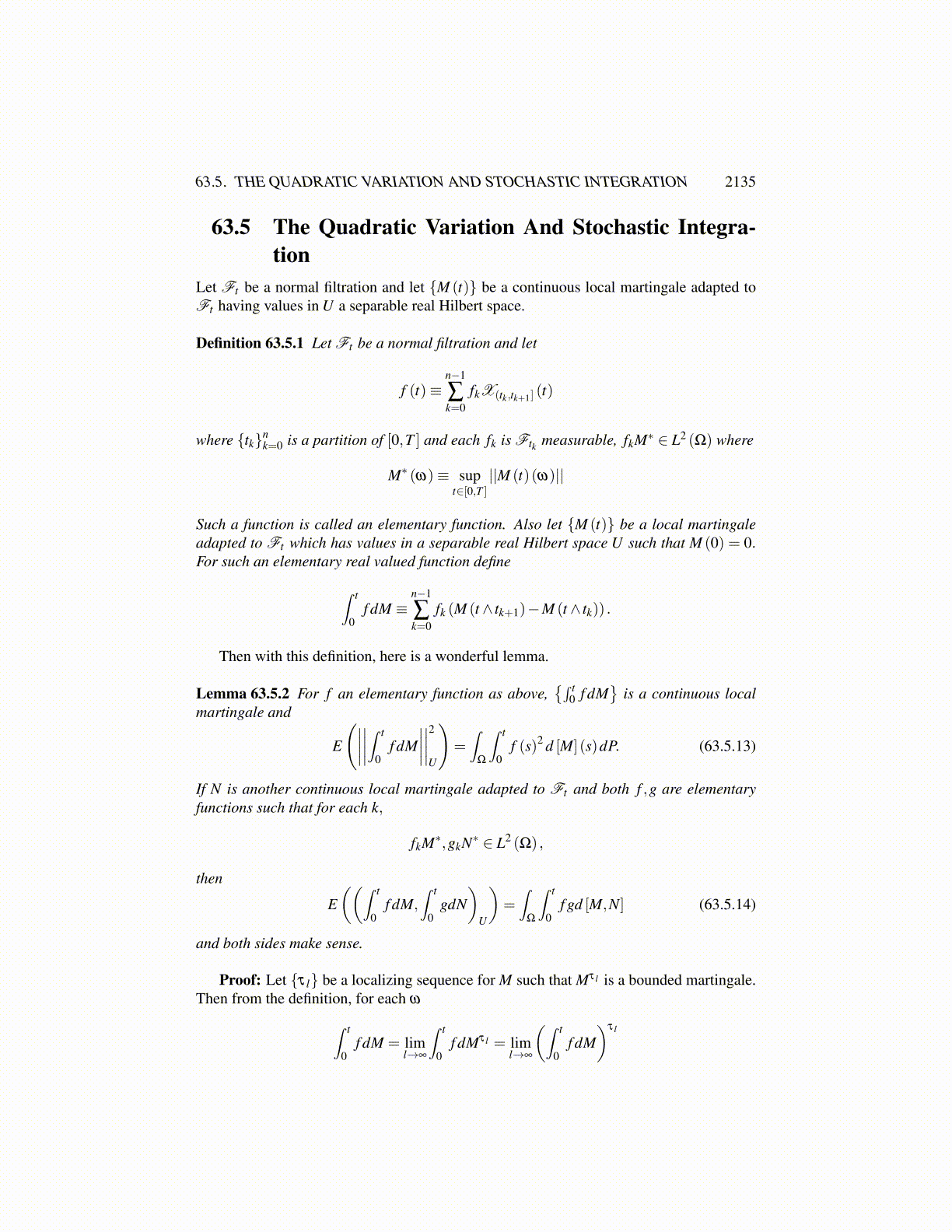
63.4. THE BURKHOLDER DAVIS GUNDY INEQUALITY 2135
and now note that([M]τn
)(T )1/2 and (Mτn)∗ increase in n to [M] (T )1/2 and M∗ respec-
tively. Then the result follows from the monotone convergence theorem.Here is a corollary [108].
Corollary 63.4.5 Let {M (t)} be a continuous H valued local martingale and let ε,δ ∈(0,∞) . Then there is a constant C, independent of ε,δ such that
P
M∗(T )︷ ︸︸ ︷
supt∈[0,T ]
||M (t)|| ≥ ε
≤ C
εE([M]1/2 (T )∧δ
)+P
([M]1/2 (T )> δ
)
Proof: Let the stopping time τ be defined by
τ ≡ inf{
t > 0 : [M]1/2 (t)> δ
}Then
P([M∗ ≥ ε]) = P([M∗ ≥ ε]∩ [τ = ∞])+P([M∗ ≥ ε]∩ [τ < ∞])
On the set where [τ = ∞] , Mτ = M and so P([M∗ ≥ ε])≤
≤ 1ε
∫Ω
(Mτ)∗ dP+P([M∗ ≥ ε]∩
[[M]1/2 (T )> δ
])By Theorem 63.4.4 and Corollary 63.3.3,
≤ Cε
∫Ω
[Mτ ]1/2 (T )dP+P([M∗ ≥ ε]∩
[[M]1/2 (T )> δ
])=
Cε
∫Ω
([M]τ
)1/2(T )dP+P
([M∗ ≥ ε]∩
[[M]1/2 (T )> δ
])≤ C
ε
∫Ω
[M]1/2 (T )∧δdP+P([M∗ ≥ ε]∩
[[M]1/2 (T )> δ
])≤ C
ε
∫Ω
[M]1/2 (T )∧δdP+P([
[M]1/2 (T )> δ
])The Burkholder Davis Gundy inequality along with the properties of the covariation impliesthe following amazing proposition.
Proposition 63.4.6 The space M2T (H) is a Hilbert space. Here H is a separable Hilbert
space.
Proof: We already know from Proposition 62.12.2 that this space is a Banach space. Itis only necessary to exhibit an equivalent norm which makes it a Hilbert space. However,you can let F (λ )= λ
2 in the Burkholder Davis Gundy theorem and obtain for M ∈M2T (H) ,
the two norms (∫Ω
[M] (T )dP)1/2
=
(∫Ω
[M,M] (T )dP)1/2